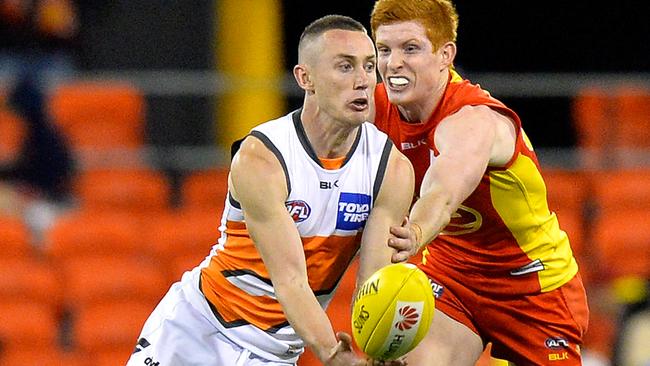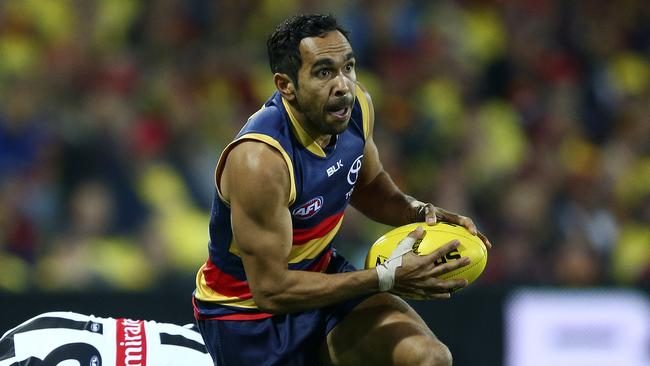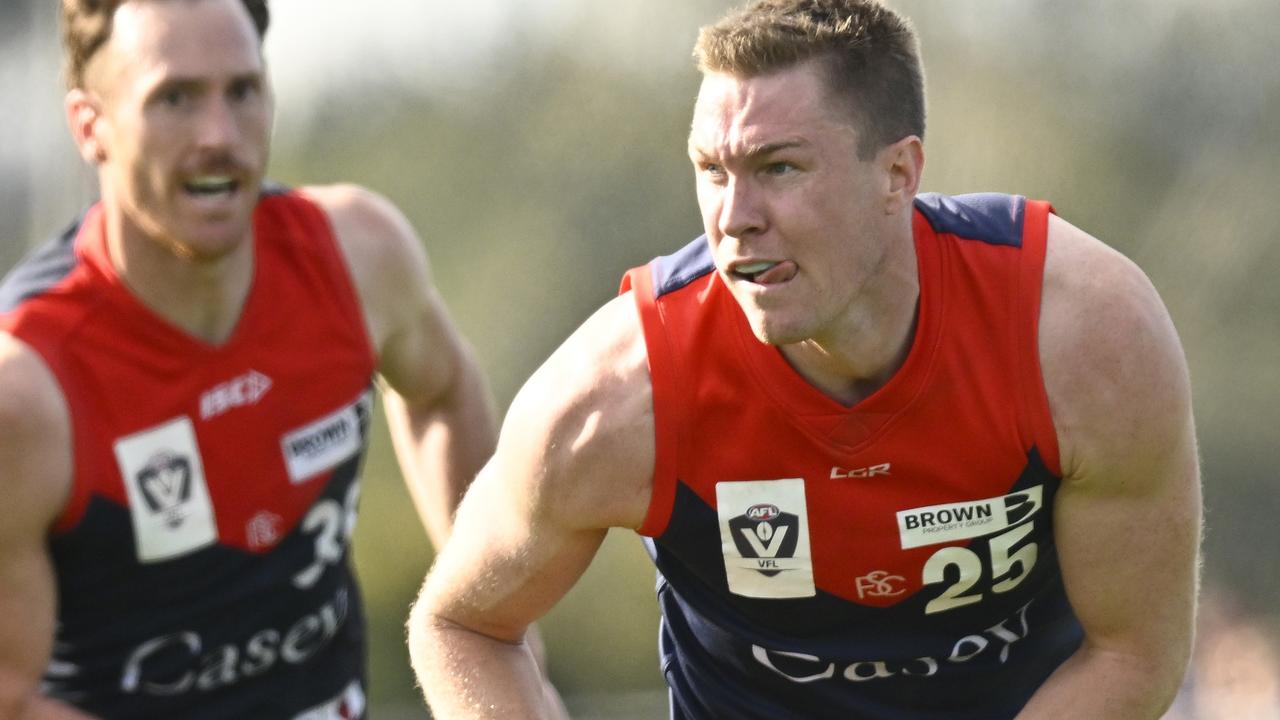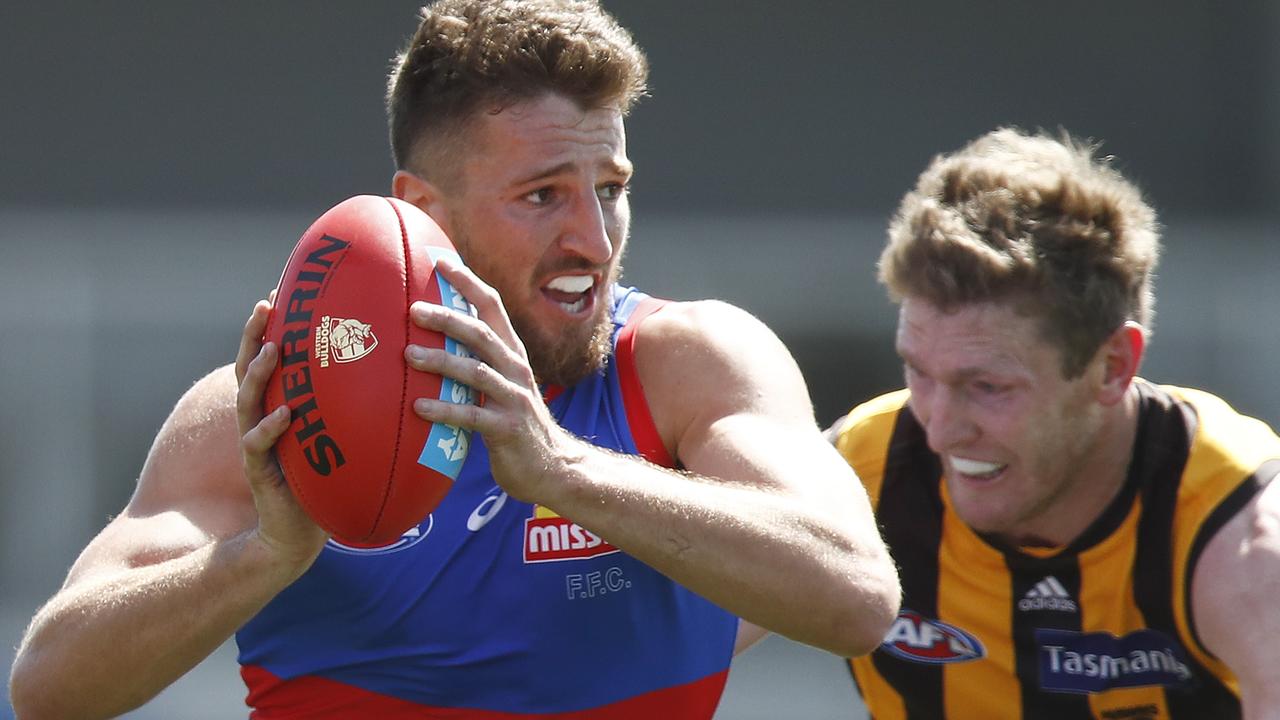AFL finals: There are eight starters but flag contenders can be narrowed to race in five, writes David King
ALL eight finalists are bunched like a Tour de France peloton entering the hills and each team presents different reasons why it can become premier. DAVID KING RATES EVERY FINALIST.

David King
Don't miss out on the headlines from David King. Followed categories will be added to My News.
ONLY one win and percentage separates the top seven teams before the final round of what has been an incredibly even season. All eight finalists are bunched like a Tour de France peloton entering the hills.
Each team presents different reasons why it can become premier. They all have assets that will be highlighted, but also flaws that can be exposed. That is finals football.
Which facet of our game do we value more than others? In the old days it was a simple decision between attack or defence, but the game has become more complicated over the past three to five years.
Do you rate your team’s ball movement above denying the opposition’s? Is winning contested ball the key? Scoring after opposition turnovers versus scoring from stoppages?
So many questions, so few answers.
I’ve put together a balance sheet on the “knowns”. It’s what we can track via Champion Data statistics, which, while they aren’t for everyone, certainly provide substance for the discussion.
The art of each coaching panel is evident when orchestrating a ball movement model and a structural system that denies the opposition its plan.
Champion Data has qualified and rated all ball movement, from any position on the field, against the competition average.
The table here identifies, in percentage terms, effectiveness by comparison to the expected ball movement.

In the case of Greater Western Sydney, for instance, it means the Giants move the ball 135 per cent better than the expected AFL average.
If the premiership is to decided by ball movement, then it can won by a team outside the top four.
The Giants are head and shoulders above the rest when they win possession of the ball.
Over the past five years this has been the clear strength of Hawthorn, but others are challenging now and using some of Alastair Clarkson’s ideas.
Adelaide has the game’s best attack on the back of swift and direct ball use.
Denying the opposition the ability to move the ball is just as critical. This is where Sydney and Geelong stake their claims.
Nothing for nothing. Deny, deny, deny. We all witness the brutality of the Swans in heavy traffic around stoppages and their tackle pressure and this translates to stifling the opposition’s effectiveness.
Geelong moves the ball methodically and patiently down the field to always remain organised in the defensive half in case of a turnover.
The Cats have a grid-like defensive plan that can win them the flag.

At the pointy end of the season there are no easy games, no fatteners that distort form lines or inflate the figures.
It’s the best versus the best and the “Top 8 v Top 8” table doesn’t lie.
Add travelling interstate and you’ll immediately understand why jockeying for home finals is paramount to premiership success.
Nine wins for travelling top-eight teams in 28 games against other top-eight teams says it all.
Adelaide has struggled on the road, so has North Melbourne and we all know about the West Coast Eagles.
Geelong reigns supreme against other topliners and, if Adelaide falters against the Eagles tonight, then the Cats jump into the box seat via an MCG-based finals campaign.
A team’s form against the best is always a genuine success indicator.
Almost 60 per cent of all scoring comes after turnovers and 35 per cent after winning clearances.
The difference between what you score and what you concede is all that matters, not exclusively offence and defence.
History is always a great guide. The premiers over the past decade have ranked in the top two at scoring from turnovers and top three from clearances.
That won’t be the case at the end of this remarkable season because different teams rank in the top three in each of those categories.

Adelaide, Geelong and Hawthorn get you in general play, when the game is in motion. But as soon as it stops, the advantage flips back towards the strength of GWS, Sydney and West Coast — the stoppages.
Fitness is always a factor at this end of the season and “players used” throughout the year is another genuine success indicator.
Adelaide has had the healthiest season ever tracked by Champion Data, suiting up only 29 players. It is the only team to be sub-30 in the past 17 years.
The balance sheet has the Swans holding sway, as you would expect, but the gap between the chasing pack is extremely minimal.
It all depends on what indicator you rate highest. A case can be mounted for at least five teams to win this season’s premiership.
Sydney v Geelong in the 2016 Grand Final is my guess. How about yours?


